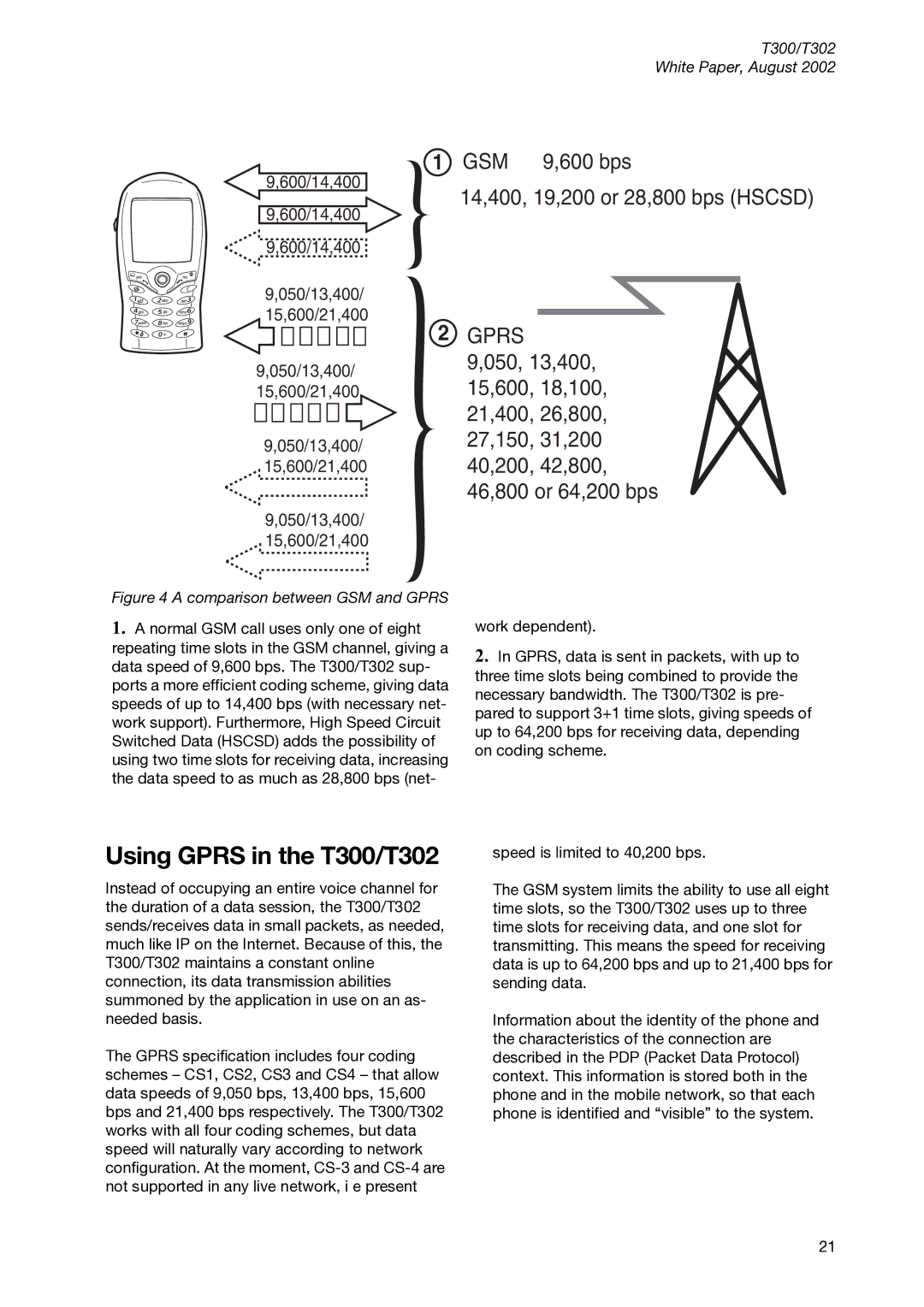
T300/T302
White Paper, August 2002
1 GSM 9,600 bps
9,600/14,400
9,600/14,400
9,600/14,400
9,050/13,400/
15,600/21,400
9,050/13,400/
15,600/21,400
9,050/13,400/
15,600/21,400
9,050/13,400/
15,600/21,400
14,400, 19,200 or 28,800 bps (HSCSD)
2GPRS
9,050, 13,400, 15,600, 18,100, 21,400, 26,800, 27,150, 31,200 40,200, 42,800, 46,800 or 64,200 bps
Figure 4 A comparison between GSM and GPRS
1.A normal GSM call uses only one of eight repeating time slots in the GSM channel, giving a data speed of 9,600 bps. The T300/T302 sup- ports a more efficient coding scheme, giving data speeds of up to 14,400 bps (with necessary net- work support). Furthermore, High Speed Circuit Switched Data (HSCSD) adds the possibility of using two time slots for receiving data, increasing the data speed to as much as 28,800 bps (net-
Using GPRS in the T300/T302
Instead of occupying an entire voice channel for the duration of a data session, the T300/T302 sends/receives data in small packets, as needed, much like IP on the Internet. Because of this, the T300/T302 maintains a constant online connection, its data transmission abilities summoned by the application in use on an as- needed basis.
The GPRS specification includes four coding schemes — CS1, CS2, CS3 and CS4 — that allow data speeds of 9,050 bps, 13,400 bps, 15,600 bps and 21,400 bps respectively. The T300/T302 works with all four coding schemes, but data speed will naturally vary according to network configuration. At the moment,
work dependent).
2.In GPRS, data is sent in packets, with up to three time slots being combined to provide the necessary bandwidth. The T300/T302 is pre- pared to support 3+1 time slots, giving speeds of up to 64,200 bps for receiving data, depending on coding scheme.
speed is limited to 40,200 bps.
The GSM system limits the ability to use all eight time slots, so the T300/T302 uses up to three time slots for receiving data, and one slot for transmitting. This means the speed for receiving data is up to 64,200 bps and up to 21,400 bps for sending data.
Information about the identity of the phone and the characteristics of the connection are described in the PDP (Packet Data Protocol) context. This information is stored both in the phone and in the mobile network, so that each phone is identified and “visible” to the system.
21
